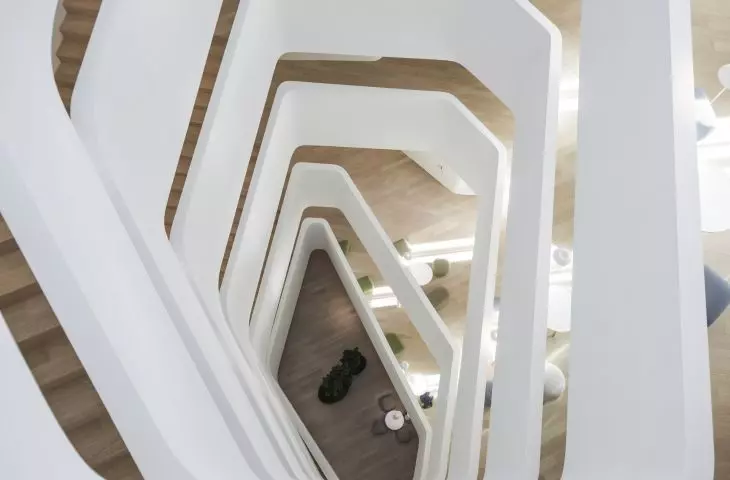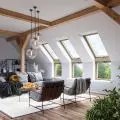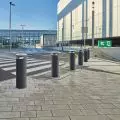Tiselli Studio Architetti
[material prepared on the basis of the studio's description]
Sidera, the new office building of the Conad market chain, is located on the outskirts of Forlì (Emilia-Romagna region), in a production area on the edge of an ancient Roman centuria. However, the landscape is dominated by a monotonous succession of prefabricated production halls. Tisselli Studio Architetti faced the challenge of creating a distinctive architecture.
The nontrivial geometry of Sidera's massing
© tissellistudioarchitetti
The architectural context of the province of Emilia Romagna
The existing context offered no inspiration or constraints beyond the functional program presented by the investor, for whom an important criterion wasmaximum flexibility in office configuration, with anemphasis on small workspaces for 1 or 2 people and thus avoiding the open space formula. From the very beginning, the design process did not focus on formal search, but on functionality and developing logistical possibilities. The final form emerged from a creative process that prioritized rationality and pragmatism. The result is a 100-meter-high office building, 33 meters high, built on a 3-meter-high elevated garden.
The entrance to the office building
© tissellistudioarchitetti
Building materials selected by Italian-Polish office Tisselli Studio Architetti
The facade is made of aluminum, black pigmented concrete and glass.The aluminum on the facade dynamically reflects natural light, taking on different shades and colors depending on the time of day and weather conditions. Rhythmic sunlight slats create the illusion of monolithic or transparent, depending on the viewing angle. As modern navigation tools such as Google Earth have accustomed us to seeing space from above, the roof has been interpreted as a fifth elevation from the start. This awareness translated into giving an architectural key from this perspective as well. Composed of six sloping slopes, the roof refers to vernacular architecture, contrasting with the industrial surroundings and establishing a dialogue with the horizon line of the nearby Apennines.
The roof was treated as the fifth side of the facade
© tissellistudioarchitetti
CIA Conad office building interiors
The interior design was treated as an integral component of the whole. From the very beginning, the architects intended not to focus only on the outer shell, but to make it a part of a more complex organism. Guided by the principles of neuroarchitecture, they took care of optimal natural lighting, air quality control and acoustic insulation. Artificial lighting was synchronized with the diurnal rhythm, while an advanced ventilation system and a complete lack of openable windows ensure clean air despite the location in one of Europe's most polluted regions. All these factors guarantee maximum psycho-physical comfort for employees, which translates into higher quality of work. The central staircase, the only place showing the full height of the building, is distinguished by the organic shapes of the balustrade. Like a living organism, the winding and rounded lines rise towards the sunlight penetrating through a large skylight. Spacious landings with comfortable seating encourage spontaneous interactions among employees, ensuring the overall well-being that underlies productivity.
Communal spaces
© tissellistudioarchitetti
Apart from the natural pigmentation of the building materials, no colors were added to emphasize the stature and elegance inherent in the headquarters of a major company. The building's restraint in this sense reflects the seriousness and pragmatism of its users. Sidera is at once a living and creative organism that rejects the rigid logic of right angles, and avoids any static constraints that force monumental and banal symmetries.
Sidera's environmental impact
In a context lacking a strong identity and architectural value, Sidera was proposed as a form of compensation for the urban industrial zone and its users. Surrounded by 300 trees and 22,000 plants, the office building is entirely powered by a photovoltaic system. The project avoids formalism and individualism, at its core it seeks to interpret the needs of its users without losing sight of human relations in a reality that increasingly distances us from others and from the environment around us.
A realization by a Polish-Italian architectural firm in Forli
© tissellistudioarchitetti
Ania Kociucka
Illustrations provided courtesy of Tiselli Studio Architetti.


































































































